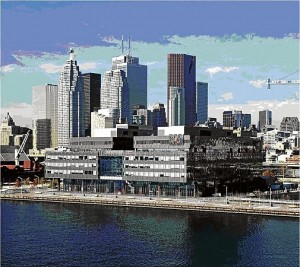Population one more time

BUILDING construction is ubiquitous in Toronto, Canada due to rapid population growth and a stable economy, whereas in most North American cities construction activity is rare because of declining population. newswire.ca
THE IMAGES are all too familiar on television and the newspapers. Clusters of shanties with many dirty, starving children playing; scavengers digging in garbage dumpsites scrounging for trash convertible to cash; traffic-congested roads with all types of smoke-belching vehicles and many high-rise buildings here and there.
The media say we’re in this mess because of our rapidly increasing population and that we must balance population growth with economic development.
We know that the average child-bearing woman in our country had 6 children in 1975, and 3.3 in 2000, and 2.7 today even without legal population control. Yet, some are in a rush for our total fertility rate to reach 2.1 so we can become well-off as a nation, they say.
According to them the way to do it is to help the poor women opt to take contraceptives to limit family size. Look around you; has not family size everywhere gone down from previous generations even among the poor?
In Manila a government hospital sterilizes women who just gave birth there even without their consent. And why do many wealthy families have few children? Is it only about money?
Are we overpopulated?
Do we need to control the number of babies being born in our country? The town where I grew up is hardly recognizable today. The once open field where we played when we were kids is now crammed with buildings and all sorts of commercial establishments. There are more people there now because of urbanization. The proportion of poor to better-off people is not much different. Amount and quality of education has given the population very different options.
We cannot say legislators are worried about the carrying capacity of our land because our nation’s population density is just 250 per square kilometer, not much different from Britain, Germany and Vietnam. Though, our National Capital Region has a population density of 17,500/sq km because of urbanization and poor planning. Singapore with little land, has less than half of our NCR’s population density.
Strong economic driver
India, a fast-growing economy, boasts of a population where half fall below 25 years of age. Indonesia is proud to say half of their population is below 30 years of age. Our own Jaime Augusto Zobel de Ayala at one business gathering said ours is a consumer-driven economy.
According to our Central Bank Governor Amando Tetangco Jr., “Filipinos too young to work account for less than 30 percent of the population and those too old to contribute are only 15 percent. Those in between are the people who have the purchasing capacity that can drive consumption and investment and therefore a faster economy.”
In that sense we are a rich nation because more than half of our population are economically active, and a third is being prepared to become economically active.
What should be our goal and subject of debates then, instead of limiting number of births? Should we not just encourage our present leaders in attacking corruption in government, improving education, infrastructure development and healthcare?
Isn’t the world looking at Asia today where half of the world’s total population will be found by 2030?
Singapore and Thailand, two progressive nations, consider their aging population as among their formidable challenges. Taiwan, South Korea, Japan and Malaysia are also demographically challenged right now.
Can we please agree that the number of our people is our wealth and not our problem? And can we please accept that our Constitution is rare in having as one provision that the State will protect life from conception until natural death? Can we also not equivocate on when life begins as we all know that life begins when egg and sperm unite at conception or fertilization?
For comments or inquiries, e-mail amadodejesus@gmail.com
